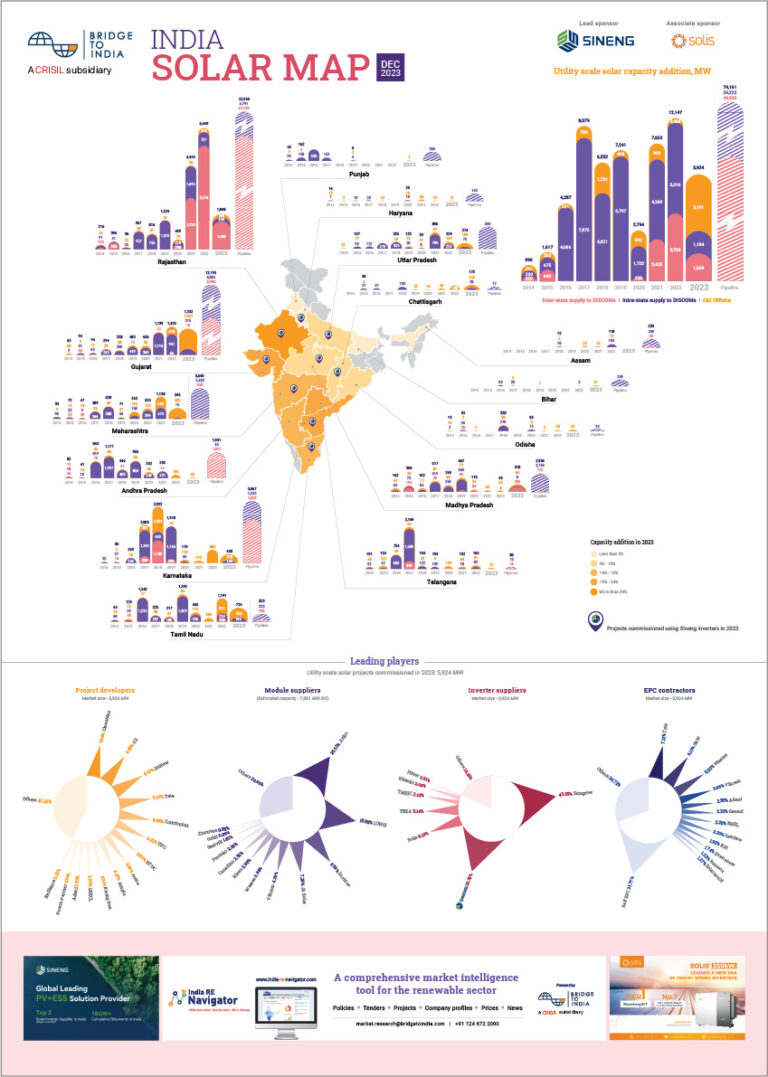In Q1 2021, daytime power prices in southern Australia fell repeatedly below zero between 10 am and 3:30 pm. The negative prices came on back of low power demand and increasing renewable power penetration in the country (28% in 2020). In Germany too, where Q1 renewable power penetration crossed 50%, frequency of negative price points has been increasing. In March 2020, the country logged 130 hours of negative prices due to high wind power production, up 44% over March 2019. Similar events are now witnessed with increasing regularity in many other countries across Europe and USA.
- Most countries are struggling to cope with intermittency risk of renewable power;
- In India, various initiatives to improve grid resilience have made little headway so far due to high policy inertia, low technical expertise and unwillingness to bear extra costs;
- Without proactive planning, the problem would escalate disproportionately over time and affect growth prospects of the sector;
With increasing share of renewable power, residual power demand has come to resemble the famous “duck” curve, posing problems for grid managers and conventional power producers. While renewable power usually enjoys guaranteed feed-in-tariffs (FITs) or ‘must run’ status, inflexible coal-fired plants face a tough choice: expensive cycle of daily shutdowns and restarts, or payments to consumers to be able to despatch power i.e., negative prices. The affected countries are responding in different ways – building storage capacity, increasing reliance on flexible gas-fired power, undertaking demand side management, and/ or increasing trading in ancillary services and other grid flexibility services. But renewable power is not getting away scot free either. Germany has imposed restriction on FIT payments, while the Netherlands has said that it would not pay incentives to solar and wind power plants if power prices turn negative. In the UK, ‘constraint payments’ to wind power plants are becoming controversial.
In India, with relatively low renewable penetration of about 10%, the problem seems somewhat distant. There is a view that launch of green power exchange and the option of exporting surplus power across states or even neighbouring countries would provide sufficient system flexibility. But high price of old contracted power and transmission system constraints are formidable barriers. DISCOMs in RE-rich states – penetration in Karnataka, Andhra Pradesh and Tamil Nadu has already touched 40%, 22% and 21% respectively – are turning to curtailment with various estimates suggesting annual incidence as high as 15% in some states. Meanwhile, the ominous ‘duck’ curve is bound to get significantly worse in the coming years (see chart below).
Figure: National power demand to be met from coal-fired plants on a summer day, GW

Source: NLDC, BRIDGE TO INDIA research
Notes: 2030 scenarios assume unchanged gas-fired power supply and 100% diversion of hydro power output to peak demand hours.
There have been multiple pilots, research studies and consultation exercises over the years to examine feasibility of demand side management, flexible thermal power generation and cheaper gas-fired power. But there is no tangible progress. Reasons include high policy inertia, low technical and management expertise, poor quality data and unwillingness to bear extra costs.
Table: Status of key measures to improve grid resilience

Source: BRIDGE TO INDIA research
Lack of urgency on this front should worry all stakeholders. Absent proactive planning, the problem would escalate rapidly. DISCOMs are already getting reluctant to buy more renewable power affecting growth prospects of the sector.












